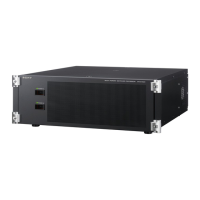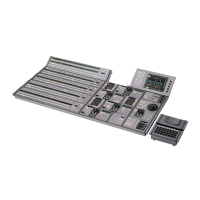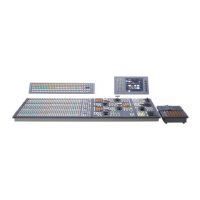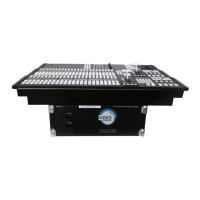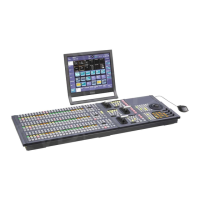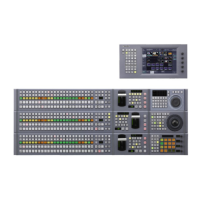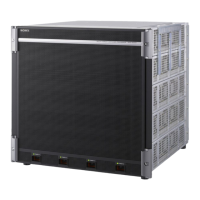111
Frame Memory Clip Function / Frame Memory Clip Operations
Chapter 7 Frame Memory
• The effect is built with the selected files, in increasing
order of the last three characters of the file name. If you
do not want to include some of these files in the effect,
first delete or rename them.
• A maximum of 99 keyframes can be included in a single
effect.
Recalling a sequence of still images
Run the effect created in the foregoing procedure.
The procedure for doing this is the same as for any other
effect.
For details, 1 “Executing Effects” (p. 161).
Frame Memory Clip
Function
What is a frame memory clip?
Movies can be read into frame memory, and recalled and
played back. A movie held in frame memory is called a
“frame memory clip.”
A frame memory clip can be named using up to four
characters (1 p. 109).
Ancillary data
In a frame memory clip, in addition to the video image,
you can also record and play back ancillary data which can
be used as embedded audio.
To record the ancillary data, the frame memory saving
mode in the Setup menu must be set to “save with ancillary
data.”
For details, 1 “Saving a Frame Memory Clip with
Ancillary Data” (p. 216).
• With this setting, the saving mode for still images also
changes to “save with ancillary data,” but when playing
back a still image the ancillary data is never played.
• When you change the saving mode, the frame memory is
initialized, and any existing recorded frame memory
data is lost.
Note on transferring ancillary data
Ancillary data is recorded when the frame memory saving
mode is set to “save with ancillary data,” and can be saved
to the local disk, removable disk, or other external devices,
and recalled. However, the ancillary data can only be
saved or recalled when all of the following conditions are
met.
• The frame memory saving mode is set to “save with
ancillary data.”
• Ancillary data is present in the saved or recalled frame
memory file.
• The system signal format is the same as the signal format
in the file.
When the frame memory saving mode is set to “save with
ancillary data,” the following ancillary data status
information is added to a frame memory clip.
• Disable:
In this state the ancillary data is not played. This is the
status when the [Ancillary Enable] button in the Frame
Memory >Clip >Ancillary Enable menu (2525) is set to
Off.
• Enable:
In this state, ancillary data is present, and can be played
back. This is the status when the [Ancillary Enable]
button in the Frame Memory >Clip >Ancillary Enable
menu (2525) is set to On. This is the status after a clip
recording operation.
This status information is saved in a file, and is followed
when the file is recalled.
Frame memory clip settings
For frame memory clips, you can make the following
settings using a menu or device control block.
• Start point
• Stop point
• Loop On/Off
The above settings can be saved in a snapshot register as
snapshot attributes, and recalled.
Frame Memory Clip
Operations
During frame memory clip playback (1 p. 112) of the
pair assigned to either of the target FM selection buttons,
frame memory operations may not be performed properly.
Carry out frame memory operations after stopping clip
playback.
Preparations for Operation
The preparations for using a frame memory clip (hereafter,
a “clip”) are the same as for a still image operation.
For details, 1 “Preparations” (p. 103) and
1 “Selecting Outputs and Target Frame Memory”
(p. 106).
Notes
Notes
Notes
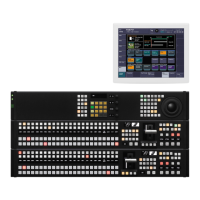
